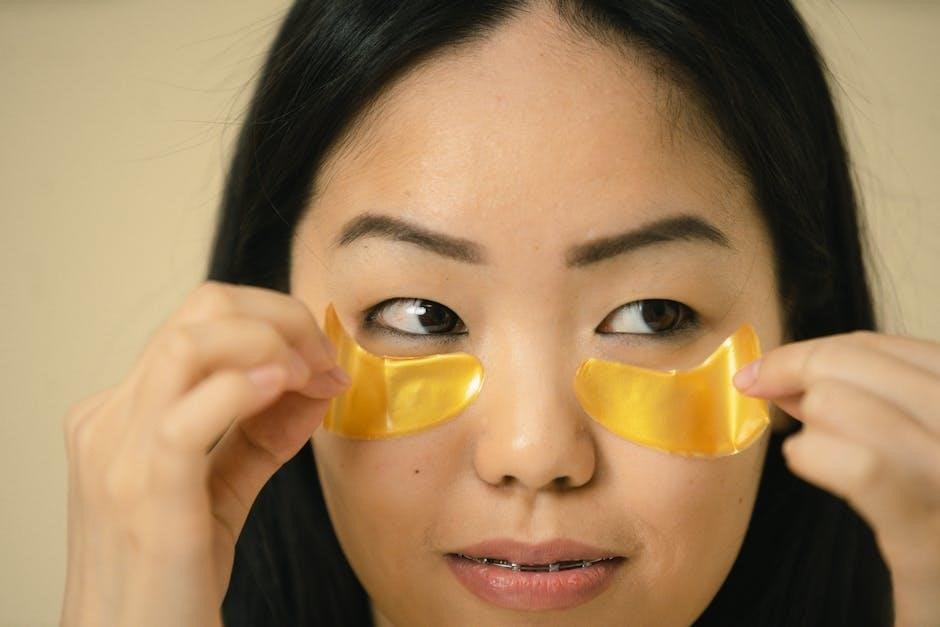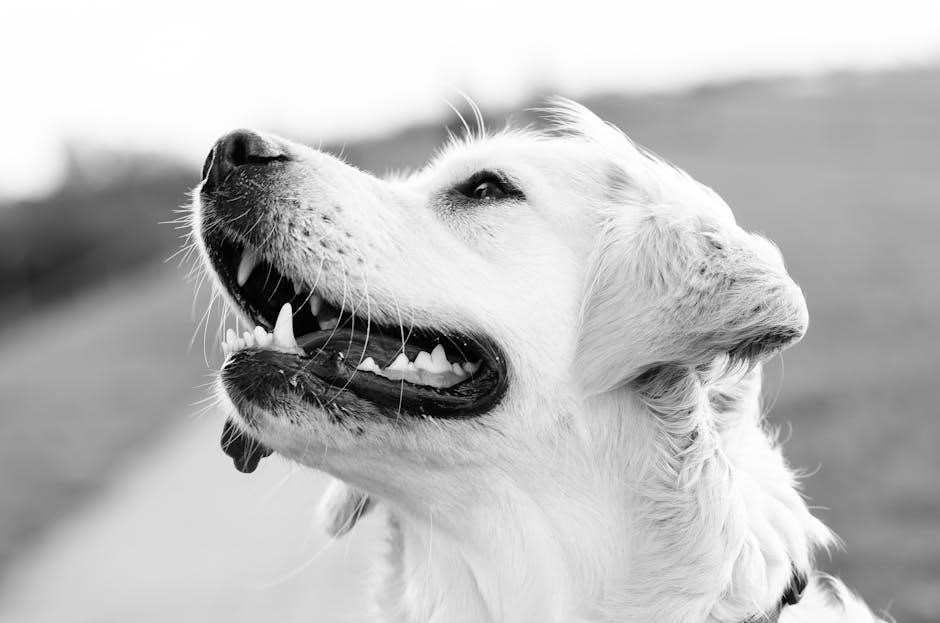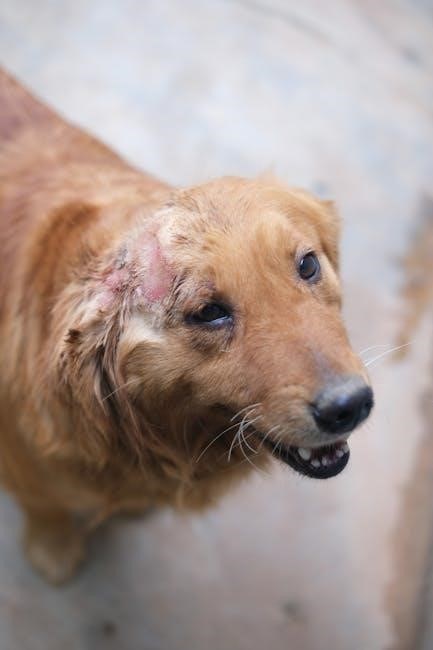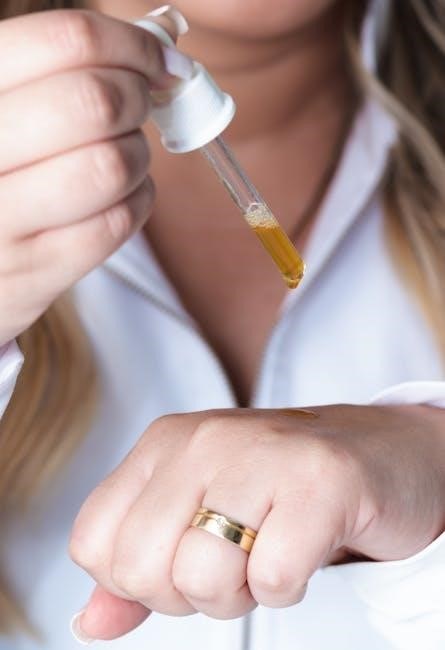Ichthyosis in Golden Retrievers is a rare genetic skin disorder causing scaling and dryness, linked to the PNPLA1 gene mutation, leading to abnormal keratinocyte turnover.
1.1 Definition and Overview of Ichthyosis
Ichthyosis is a rare inherited skin disorder in Golden Retrievers, characterized by excessive scaling and dryness. It is caused by mutations in the PNPLA1 gene, leading to abnormal keratinocyte turnover. The condition manifests as thick, plate-like scales, primarily on the abdomen, legs, and ears. Unlike other breeds, Golden Retrievers typically exhibit a mild form, with symptoms often appearing early in life. It is named from the Greek word ‘ichthys,’ meaning fish, due to its fish-like scale appearance.
1.2 Brief History of Ichthyosis in Golden Retrievers
Ichthyosis in Golden Retrievers was first identified in the 1990s, often misdiagnosed as seborrhea due to similar scaling symptoms. The condition gained attention as breeders and veterinarians noted its genetic nature. In the early 2000s, research linked it to a mutation in the PNPLA1 gene. By the 2010s, genetic testing became available, enabling accurate diagnosis and carrier identification. This history highlights the progression from confusion with other skin disorders to a well-understood genetic condition, aiding in targeted breeding and management strategies.

Causes and Genetics of Ichthyosis in Golden Retrievers
Ichthyosis in Golden Retrievers is caused by a PNPLA1 gene mutation, an autosomal recessive trait affecting lipid metabolism, leading to skin scaling and genetic identification.
2.1 The Role of the PNPLA1 Gene Mutation
The PNPLA1 gene mutation is a key factor in Golden Retriever ichthyosis, causing abnormal lipid metabolism in the skin. This mutation leads to defective keratinocyte function, resulting in excessive scaling. Genetic testing identifies carriers and affected dogs, aiding in breeding decisions. While the mutation is linked to the condition, further research is needed to fully understand its mechanisms and potential therapeutic targets; This genetic defect is specific to autosomal recessive inheritance patterns in Golden Retrievers.
2.2 Autosomal Recessive Inheritance Pattern
Golden Retriever ichthyosis follows an autosomal recessive inheritance pattern, meaning a dog must inherit two copies of the defective PNPLA1 gene—one from each parent—to exhibit the condition. Carriers, with one defective gene, typically show no symptoms but can pass the mutation to offspring. This inheritance pattern underscores the importance of genetic testing in identifying carriers and affected dogs, aiding responsible breeding practices to reduce the prevalence of the disorder in the breed population.
2.3 Prevalence in Golden Retrievers
Ichthyosis in Golden Retrievers is a rare genetic disorder, first identified in the 1990s. It is often misdiagnosed as seborrhea due to similar scaling symptoms. The condition is less severe in Golden Retrievers compared to other breeds, with most dogs exhibiting mild scaling. Prevalence is influenced by genetic diversity and breeding practices. Responsible breeding, aided by genetic testing, helps reduce the occurrence of this autosomal recessive condition, ensuring healthier outcomes for the breed. Awareness among breeders and owners is key to managing its impact.
Clinical Manifestations of Ichthyosis
Ichthyosis in Golden Retrievers presents with scaling, dryness, and abnormal skin texture, often resembling fish scales. Symptoms typically appear early, progressing as the dog matures.
3.1 Common Symptoms and Physical Signs
Golden Retrievers with ichthyosis exhibit scaling, thickened skin, and dryness, often starting at 2 months old. The condition progresses, causing flaky, fish-scale-like skin. Affected dogs may show redness and irritation. Topical therapies help manage symptoms, improving skin health and reducing discomfort. Early diagnosis is crucial for effective care.
3.2 Age of Onset and Progression
Ichthyosis in Golden Retrievers typically manifests at 2 months of age, with visible signs like scaling and dryness. The condition progresses gradually, worsening over time if untreated. Unlike severe forms in other breeds, Golden Retrievers usually exhibit mild symptoms. Early diagnosis and intervention are crucial to manage progression effectively and improve quality of life. Regular veterinary check-ups and tailored care plans help mitigate the lifelong impact of this genetic disorder.
3.4 Comparison with Other Skin Conditions
Ichthyosis in Golden Retrievers is often mistaken for seborrhea or atopic dermatitis due to similar scaling symptoms. However, ichthyosis is distinct, caused by a genetic mutation affecting keratinocyte turnover. Unlike seborrhea, it doesn’t typically involve excessive oil production. While atopic dermatitis is immune-mediated, ichthyosis is purely genetic. Accurate diagnosis is crucial to tailor treatments, as therapies for other conditions may not effectively manage ichthyosis symptoms. Early differentiation ensures proper care and improves outcomes for affected dogs.

Diagnosis of Ichthyosis in Golden Retrievers
Diagnosis involves genetic testing for the PNPLA1 mutation, histopathological examination of skin samples, and differential diagnosis to rule out conditions like seborrhea or atopic dermatitis.
4.1 Genetic Testing for PNPLA1 Mutation
Genetic testing identifies the PNPLA1 mutation causing ichthyosis in Golden Retrievers. It detects homozygous (affected), heterozygous (carriers), and wild-type individuals. This test is crucial for confirming diagnosis, supporting clinical findings, and aiding breeders in making informed decisions to reduce the mutation’s prevalence. Veterinarians use these results to guide treatment plans and advise on breeding practices, ensuring ethical and healthy outcomes for the breed.
4.2 Histopathological Examination
Histopathological examination involves analyzing skin biopsy samples to identify structural abnormalities. In Golden Retrievers with ichthyosis, this process reveals hyperkeratosis, parakeratosis, and thickened skin layers. These findings help differentiate ichthyosis from other skin conditions. The examination supports genetic testing results and confirms the diagnosis, enabling tailored treatment plans. It is a critical step in understanding the severity and progression of the condition, guiding both therapeutic interventions and long-term management strategies.
4.3 Differential Diagnosis
Differential diagnosis for Golden Retriever ichthyosis involves distinguishing it from conditions like seborrhea and atopic dermatitis. While seborrhea also causes scaling, it lacks the genetic PNPLA1 mutation. Atopic dermatitis presents with intense itching, unlike ichthyosis, which primarily causes dryness and flaking. Accurate diagnosis requires clinical evaluation, genetic testing, and histopathological findings to rule out similar skin disorders. This step ensures proper identification and appropriate treatment, avoiding mismanagement of the condition.

Treatment Options for Ichthyosis
Treatment focuses on managing symptoms, with oral isotretinoin showing effectiveness in improving scaling. Topical therapies and genetic counseling are also recommended for comprehensive care.
5.1 Medical Treatments
Medical treatments for ichthyosis in Golden Retrievers focus on managing symptoms and improving skin health. Oral isotretinoin has shown effectiveness in reducing scaling and promoting keratinocyte turnover. Genetic testing is crucial for identifying affected and carrier dogs, aiding in targeted breeding strategies. Veterinary dermatologists may also recommend specific medications to address associated skin issues. Regular monitoring and adjustments to treatment plans ensure optimal outcomes and prevent complications. Early diagnosis and tailored therapies are key to improving quality of life for affected dogs.
5.2 Topical Therapies
Topical therapies play a crucial role in managing ichthyosis in Golden Retrievers by addressing scaling, dryness, and inflammation. Emollients and moisturizing shampoos help soften and hydrate the skin, reducing flakiness. In some cases, veterinarians may recommend topical corticosteroids or keratolytic agents to alleviate symptoms; These treatments aim to improve skin comfort and appearance without systemic side effects. Regular use, as directed by a veterinary dermatologist, can significantly enhance the dog’s quality of life and skin health.
5.3 Alternative and Adjunctive Therapies
Alternative therapies, such as omega-3 fatty acids, can help manage ichthyosis symptoms by reducing inflammation and improving skin health. Dietary supplements, including vitamins and minerals, may also support skin condition. Natural remedies like coconut oil and oatmeal baths can provide relief from dryness and scaling. Additionally, regular grooming with gentle brushes helps remove flakes and improve skin comfort. These adjunctive treatments, while not curative, can complement medical therapies and enhance the dog’s quality of life when used under veterinary guidance.

Management and Care Strategies
Effective management involves regular skin care, gentle grooming, and a balanced diet to reduce scaling and discomfort. Environmental adjustments and consistent hygiene practices also play a crucial role.
6.1 Skin Care and Hygiene Practices
Regular grooming and gentle bathing with shampoos containing emollients help manage scaling and dryness. Moisturizers and omega-3 fatty acids can reduce skin inflammation. Avoid harsh products, as they may exacerbate symptoms. Consistent hygiene practices, including ear cleaning and nail trimming, are essential. Daily brushing removes loose skin flakes and prevents matting. Veterinarians may recommend specific topical treatments to maintain skin health and comfort in affected Golden Retrievers.
6.2 Dietary Considerations
A balanced diet rich in omega-3 fatty acids, vitamins, and minerals supports skin health in Golden Retrievers with ichthyosis. Adding fish oil or flaxseed oil may reduce inflammation. Avoiding allergens and ensuring proper digestion can prevent skin flare-ups. A high-quality, hypoallergenic diet tailored to individual needs is recommended. Consultation with a veterinarian or canine nutritionist is essential to optimize dietary plans for managing ichthyosis effectively in affected dogs.
6.3 Environmental Adjustments
Creating a suitable environment is crucial for managing ichthyosis in Golden Retrievers. Maintaining a humid environment can help prevent skin dryness. Avoiding extreme temperatures and reducing exposure to allergens or irritants is recommended. Regular grooming in a cool, clean space and minimizing contact with potential allergens can alleviate symptoms. Ensuring a stress-free living environment also supports overall skin health and comfort for affected dogs.
Breeding Considerations and Prevention
Genetic testing is essential for identifying carriers and affected dogs, enabling responsible breeding practices to reduce ichthyosis incidence in Golden Retrievers.
7.1 Role of Genetic Testing in Breeding
Genetic testing identifies dogs with the PNPLA1 mutation, crucial for preventing ichthyosis transmission. Breeders can detect carriers and affected individuals, ensuring mating pairs are healthy. This reduces disease prevalence while maintaining breed integrity. Testing promotes informed decisions, fostering healthier litters. Regular testing in breeding programs is vital to curb the spread of this inherited condition.
7.2 Ethical Breeding Practices
Ethical breeding practices prioritize the welfare of Golden Retrievers over aesthetic or financial gains. Breeders must avoid mating dogs with ichthyosis or carrier status to prevent passing the condition. Transparency about genetic test results is essential. Responsible breeding ensures the breed’s health and diversity, aligning with ethical standards. By adhering to these practices, breeders help reduce the prevalence of ichthyosis and promote the well-being of Golden Retrievers.
7.3 Impact on Breed Population
Ichthyosis in Golden Retrievers, caused by the PNPLA1 gene mutation, has raised concerns about its growing prevalence. While symptoms are typically mild, the condition can still affect the breed’s overall health and genetic diversity. Increased awareness and genetic testing are crucial to managing its spread. Responsible breeding practices are essential to preserve the health and longevity of the Golden Retriever population, ensuring this beloved breed remains thriving for future generations.
The Role of Veterinarians in Diagnosis and Treatment
Veterinarians play a crucial role in diagnosing ichthyosis through genetic testing and skin examinations. They also guide treatment, ensuring effective management of symptoms and improving quality of life.
8.1 Importance of Early Diagnosis
Early diagnosis of ichthyosis in Golden Retrievers is crucial for effective management. Genetic testing identifies affected puppies, enabling timely intervention. Delayed diagnosis can lead to severe scaling and discomfort. Veterinarians use skin examinations and histopathology to confirm the condition. Early detection also aids in distinguishing ichthyosis from other skin disorders, ensuring appropriate treatment. Prompt diagnosis improves quality of life and helps prevent complications, making it a critical step in managing this genetic condition effectively.
8.2 Veterinary Dermatology Referrals
Veterinary dermatology referrals are essential for managing ichthyosis in Golden Retrievers. Dermatologists specialize in skin disorders, offering advanced diagnostic tools and tailored treatment plans. They often collaborate with geneticists to confirm diagnoses and develop strategies. Referrals ensure dogs receive targeted therapies, improving skin health and comfort. Early referral can prevent complications, making it a vital step in managing this condition effectively and enhancing the dog’s quality of life.
8.3 Monitoring and Follow-Up Care
Regular monitoring and follow-up care are crucial for managing ichthyosis in Golden Retrievers. Owners should schedule frequent veterinary check-ups to assess treatment efficacy and adjust plans as needed. Skin condition, scaling severity, and overall health are evaluated during these visits. Consistent adherence to prescribed therapies, including topical treatments and oral medications, is vital. Monitoring ensures timely adjustments, prevents complications, and maintains the dog’s comfort and quality of life, making ongoing care essential for optimal outcomes.

Current Research and Future Directions
Research focuses on gene therapy and novel treatments for ichthyosis, aiming to improve symptom management and quality of life for affected Golden Retrievers.
9.1 Ongoing Studies on Ichthyosis
Ongoing studies are investigating the PNPLA1 gene mutation’s role in ichthyosis, focusing on therapeutic approaches and gene therapy. Researchers aim to develop targeted treatments to manage scaling and improve skin health in Golden Retrievers. These studies explore novel medications and genetic interventions to address the root cause of the condition, offering hope for more effective and lasting solutions in the future.
9.2 Advances in Genetic Research
Advances in genetic research have deepened understanding of the PNPLA1 gene mutation causing ichthyosis in Golden Retrievers. Genome editing technologies, such as CRISPR, are being explored to correct the mutation. Genetic testing now identifies carriers and affected dogs, aiding responsible breeding. Researchers are also investigating how modifier genes influence disease severity, paving the way for personalized treatment approaches and improved breed health management.
9.3 Emerging Treatment Modalities
Emerging treatments for ichthyosis in Golden Retrievers focus on innovative approaches to manage symptoms. Oral isotretinoin has shown promise in reducing scaling and improving skin health. Topical therapies, such as corticosteroids and emollients, remain common. Researchers are exploring gene therapy to address the PNPLA1 mutation, while CRISPR technology offers potential for precise genetic corrections. Additionally, dietary adjustments and omega-3 fatty acids are being studied for their role in supporting skin health, offering hope for more effective and targeted treatments in the future.
Ichthyosis in Golden Retrievers, caused by a PNPLA1 gene mutation, requires comprehensive management, including genetic testing, tailored treatments, and ongoing care to improve quality of life for affected dogs.
10.1 Summary of Key Points
Ichthyosis in Golden Retrievers is a genetic skin disorder caused by a PNPLA1 gene mutation, leading to scaling and dryness. It is typically mild but requires management. Key points include early diagnosis through genetic testing, effective treatments like oral isotretinoin, and topical therapies. Proper skin care, dietary adjustments, and environmental changes are essential for improving quality of life. Breeding practices should prioritize genetic testing to reduce the prevalence of this condition in the breed population.
10.2 Final Thoughts on Management and Care
Effective management of ichthyosis in Golden Retrievers involves a combination of genetic testing, topical therapies, and lifestyle adjustments. Regular veterinary check-ups and tailored skin care routines are crucial. Dietary modifications and environmental changes can significantly improve symptoms. Owners should work closely with veterinarians to monitor progress and adapt treatments as needed. While the condition is often mild, consistent care ensures a better quality of life for affected dogs, emphasizing the importance of a proactive and comprehensive management approach.

Resources for Further Reading
Downloadable PDF guides, peer-reviewed articles, and breed-specific health websites provide comprehensive insights into ichthyosis management, offering evidence-based strategies and expert recommendations for affected Golden Retrievers.
11.1 Recommended Publications and Studies
Key studies on Golden Retriever ichthyosis include works by van Steenbeek (2013), Albuquerque (2019), and Caballero Cansino (2024), focusing on genetic mutations and treatment efficacy. Peer-reviewed articles from veterinary dermatology journals offer detailed insights into PNPLA1 gene research and isotretinoin therapy. Additionally, downloadable PDF guides from breed-specific health organizations provide practical advice for owners and breeders, ensuring access to evidence-based care strategies and genetic counseling resources.
11.2 Accessing Treatment Guidelines
Comprehensive treatment guidelines for Golden Retriever ichthyosis are available through veterinary dermatology journals and breed-specific health organizations. Downloadable PDF guides provide detailed protocols for managing the condition, including oral isotretinoin therapy and topical treatments. These resources often include advice for owners on skin care routines and dietary adjustments. Additionally, professional veterinary associations offer evidence-based recommendations to ensure optimal care and management of affected dogs.
11.3 Downloadable PDF Guides
Downloadable PDF guides on Golden Retriever ichthyosis provide detailed information on treatment options, genetic testing, and care strategies. These guides, available through breed-specific clubs and veterinary websites, offer practical advice for owners and breeders. They cover management techniques, dietary recommendations, and environmental adjustments to improve quality of life for affected dogs. Additionally, these resources often include summaries of clinical studies and expert recommendations for breeders to help prevent the condition.

